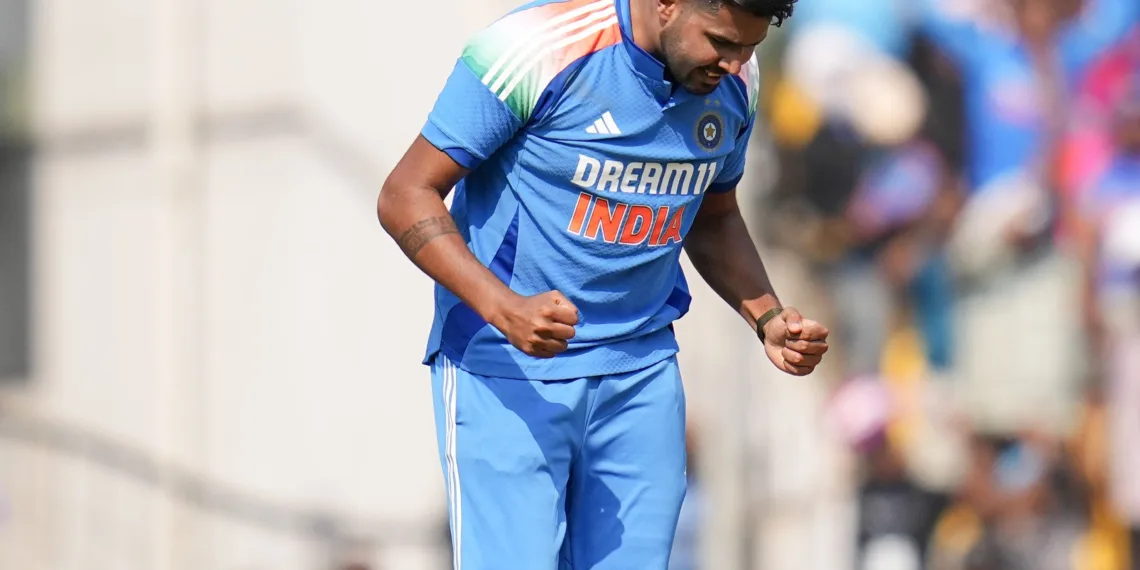India’s squad selection for the Champions Trophy 2025 raised eyebrows, particularly in the fast-bowling department. While Mohammed Siraj had been India’s leading wicket-taker in ODIs between 2022 and 2024, he found himself out of the squad.
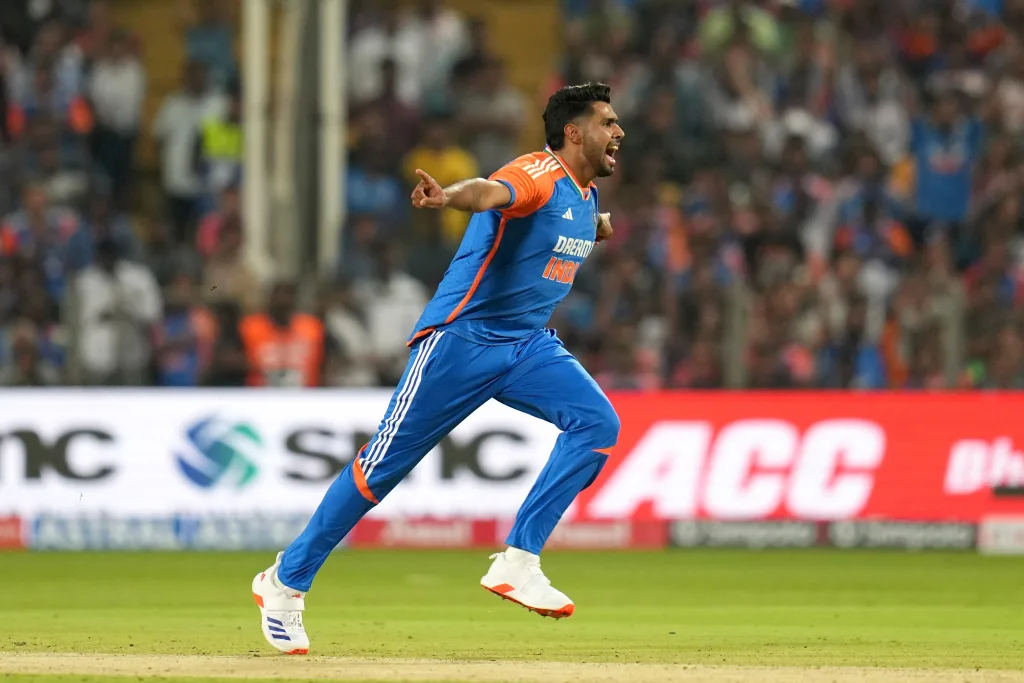
Instead, a relatively inexperienced Harshit Rana, who had only played 15 List A matches before his debut, made the cut. His inclusion over Siraj, Mukesh Kumar, and Prasidh Krishna left fans and analysts puzzled. However, Rana’s performances in the ODI series against England showcased why India backed him as a key pace option alongside Arshdeep Singh and Mohammed Shami.
Table of Contents
A Rollercoaster ODI Debut
Harshit Rana’s One Day International (ODI) debut against England was nothing short of a rollercoaster ride. His first over was expensive, conceding 11 runs, but he bounced back brilliantly with a maiden in his second. However, his third over turned out to be a nightmare, as England’s aggressive opener Phil Salt smashed him for 26 runs, making it a baptism of fire for the young pacer.
After that expensive spell, Rana was taken out of the attack. However, three overs later, he returned from the same end, this time with Salt back in the pavilion after being run out. With renewed confidence, the 6’2″ pacer showed his ability to hit the deck hard, using his pace—which regularly exceeded 140 kph—to rattle the English batters.
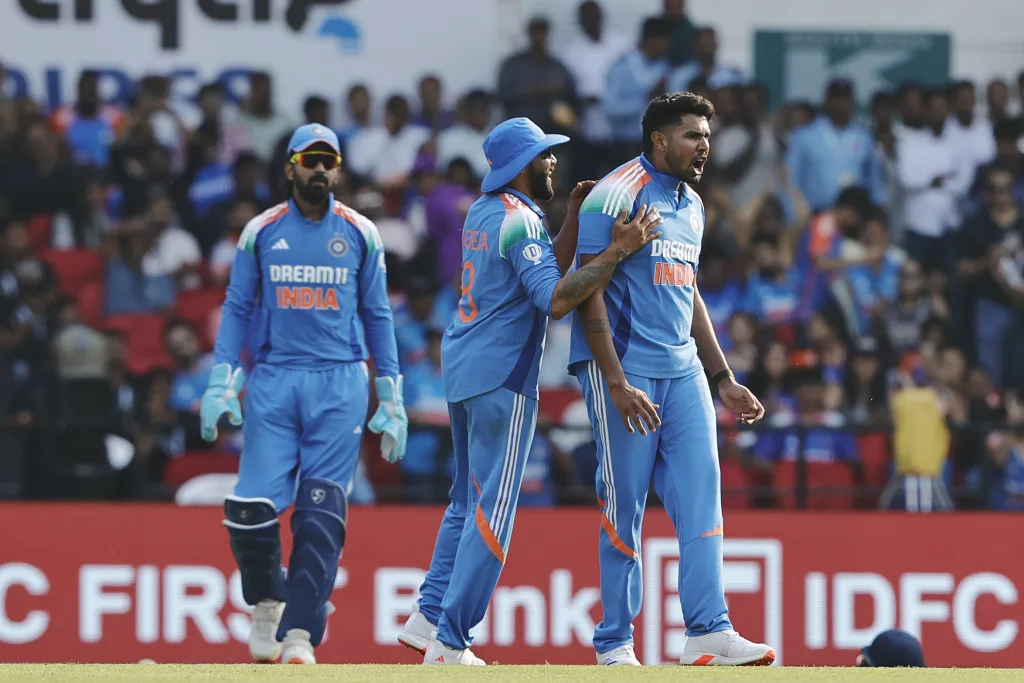
Bowling from around the wicket, Rana used a sharp, rising delivery to rush Ben Duckett into an awkward pull shot. The ball took the shoulder of Duckett’s bat and lobbed towards midwicket, where Yashasvi Jaiswal sprinted back and took a stunning over-the-shoulder catch. That wicket marked Rana’s first ODI scalp.
If that wasn’t enough, he followed up with another crucial breakthrough in the same over. Switching to over the stumps, he went wide of the crease and bowled a short-of-length delivery that reared up sharply towards Harry Brook’s ribs. Caught off guard, Brook could only glove it behind to KL Rahul, giving Rana his second wicket in just three balls. From 75 for 1, England suddenly found themselves at 77 for 3, thanks to Rana’s fiery spell.
Selectors’ Bold Call: Why Rana Over Siraj?
Rana’s selection for the England series raised many eyebrows, especially given his limited experience in List A cricket. Before being picked, he had played just 15 List A matches, making him a surprise inclusion over more seasoned bowlers like Mohammed Siraj, Mukesh Kumar, and Prasidh Krishna.
The most shocking omission was Siraj, who had been India’s leading wicket-taker in ODIs from 2022 to 2024. His tally of 71 wickets at an impressive average of 22.97 had established him as one of the most reliable seamers in the format. During the 2023 World Cup, he was even preferred over Mohammed Shami in India’s starting XI. So how did he lose out to an inexperienced bowler like Rana?
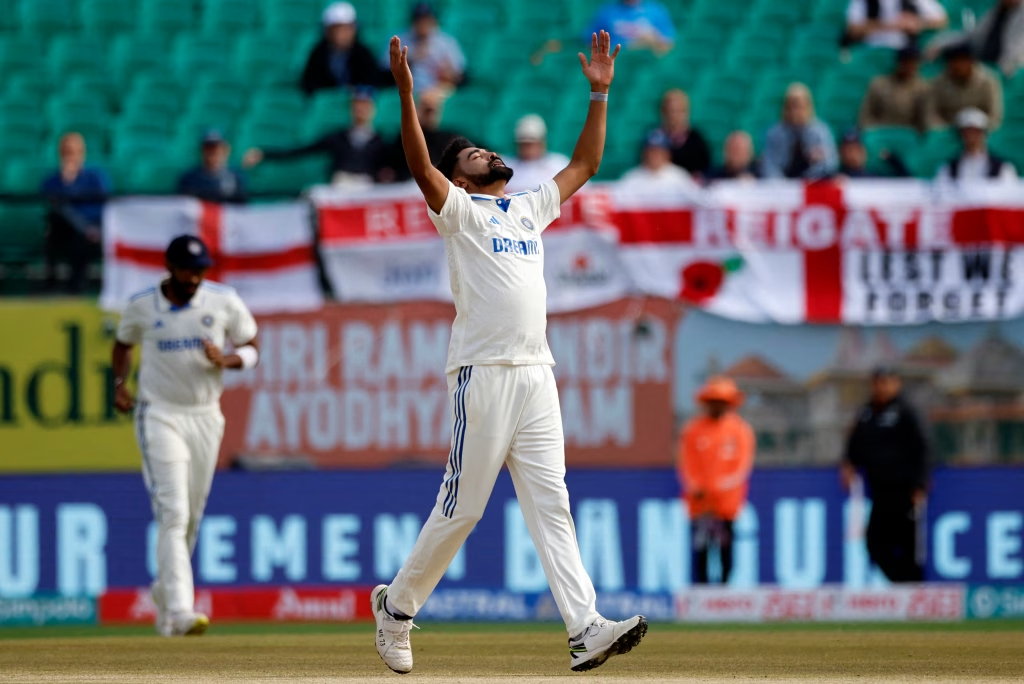
Rohit Sharma addressed the decision in a press conference while announcing the squad for the England series and India’s provisional Champions Trophy squad. He acknowledged that Siraj was “unfortunate” to miss out but explained that the team had to prioritize balance.
“We discussed it at length about it, and we are only taking three seamers there because we wanted all the all-rounders with us,” Rohit said. “It’s an unfortunate thing that he [Siraj] has to miss out, but we had no option but to get the guys who can perform a certain role.”
With Jasprit Bumrah unavailable due to injury, India opted for left-arm quick Arshdeep Singh, primarily for his ability to bowl at the death. Meanwhile, Shami’s return from a long injury layoff meant he could handle Siraj’s usual role with the new ball.
Rana’s Unique Skillset: Hit-the-Deck Operator
As for Rana’s inclusion, Rohit admitted that the selection was based on his potential rather than his track record.
“We needed something different. He’s [Rana] shown the potential that he’s got something about him, so you back those things,” Rohit explained.
India’s selectors, led by Ajit Agarkar, had been impressed with Rana since the Duleep Trophy, where he bowled sharp, probing spells with the new ball and bagged four-wicket hauls in both his games for India D. His performance earned him a place in India’s squad for the Test series in Australia, where he played the first two Tests and made an immediate impact in Perth.
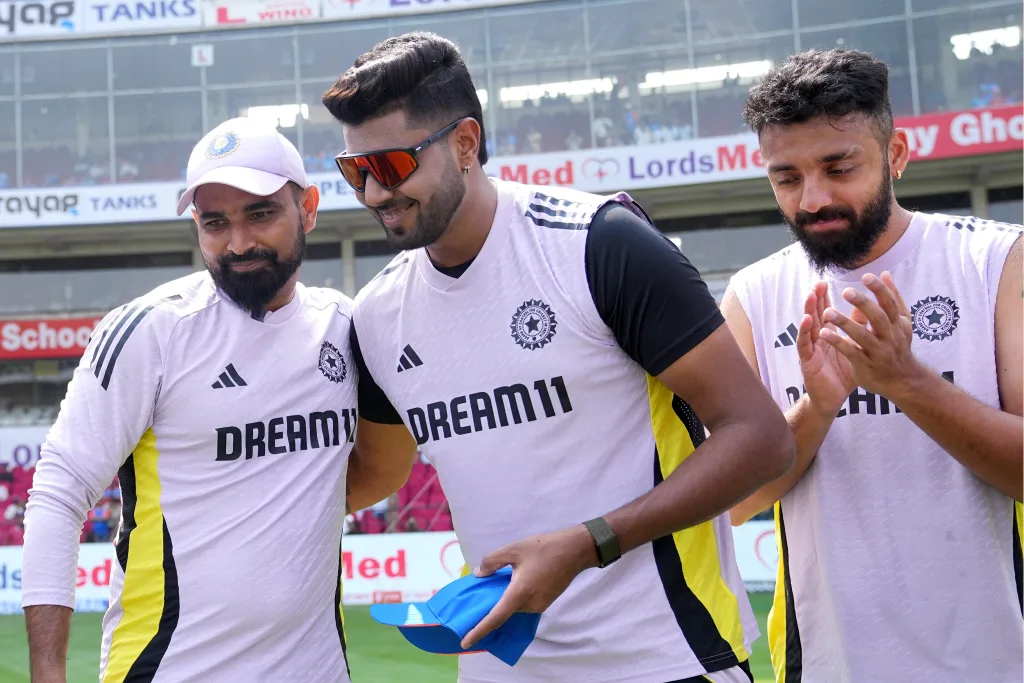
At just 22 years old, Rana is still refining his skills, but his ability to generate awkward bounce and extract movement off the deck makes him a dangerous prospect. His brief yet impactful performances across formats convinced the selectors that he was ready to be fast-tracked into India’s Champions Trophy squad.
Making an Impact Against England
Rana repaid the faith shown in him by consistently troubling England’s batters throughout the three-match ODI series. With the hard new ball, he could seam it both ways at high speeds. His well-disguised slower deliveries, an essential skill in white-ball cricket, kept the batters guessing.
However, it was in the middle overs where Rana truly shined. His ability to bowl a “heavy ball”—one that skids through sharply and rises unpredictably—was on full display. Liam Livingstone, in particular, found himself in deep trouble against Rana’s short-pitched deliveries.

In the first ODI in Nagpur, Rana rattled Livingstone with a well-directed bouncer, forcing him to take evasive action at the last moment. The England batter acknowledged the delivery with a nod, indicating that it was a top-quality ball. Rana followed it up with a slower delivery at 118 kph, deceiving Livingstone, who swung wildly but connected with nothing. Sensing that Livingstone was looking to attack, Rana shortened his length on the next ball, inducing a bottom edge straight to Rahul behind the stumps.
Despite an expensive start, Rana finished the match with figures of 3 for 53 in seven overs, playing a crucial role in India’s victory.
In the third ODI in Ahmedabad, Rana continued his dominance, dismissing both Jos Buttler and Harry Brook with deliveries that kicked up sharply and forced them to play onto their stumps.
Batting Prowess: A Hidden Advantage
Another factor that worked in Rana’s favor was his ability with the bat. Unlike many specialist pacers, he is more than just a tailender. He has a first-class century to his name and boasts a batting average of 34 in the longer format.
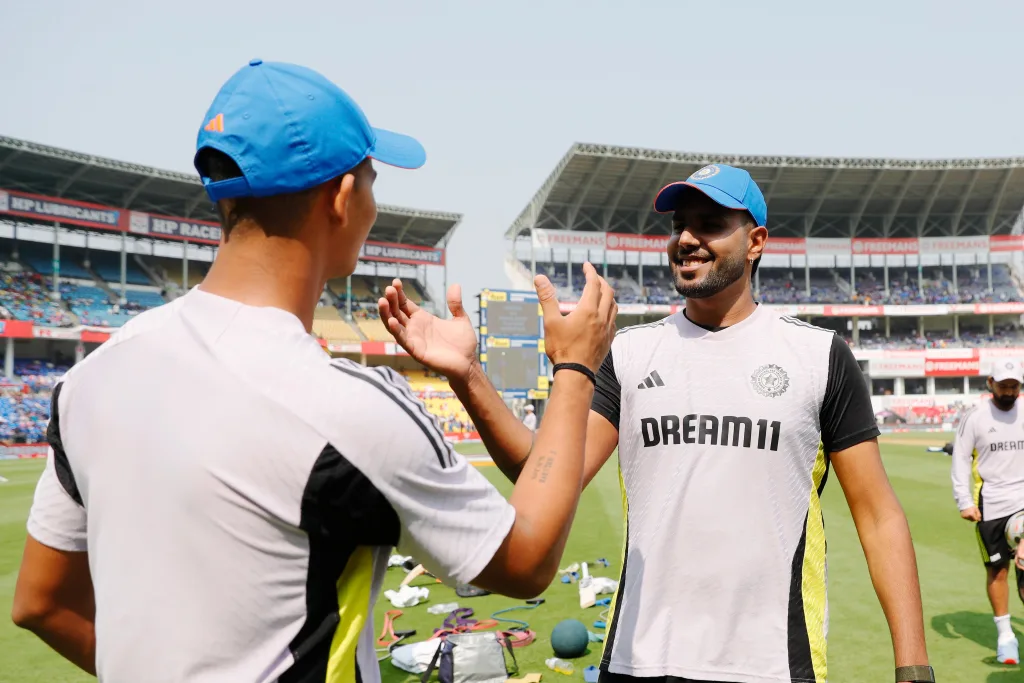
During the Ahmedabad ODI, Rana demonstrated his batting prowess by playing a fluent cover drive off Mark Wood and following it up with a massive six over long-on against Gus Atkinson. His ability to contribute with the bat strengthens India’s lower order, giving them additional depth.
Champions Trophy 2025: A Crucial Test
With all of India’s Champions Trophy matches set to be played in Dubai, Rana’s ability to bowl into the pitch and vary his pace will be invaluable. The pitches, recently used for the ILT20, are expected to assist bowlers who can hit the deck hard and generate extra bounce—an area where Rana excels.
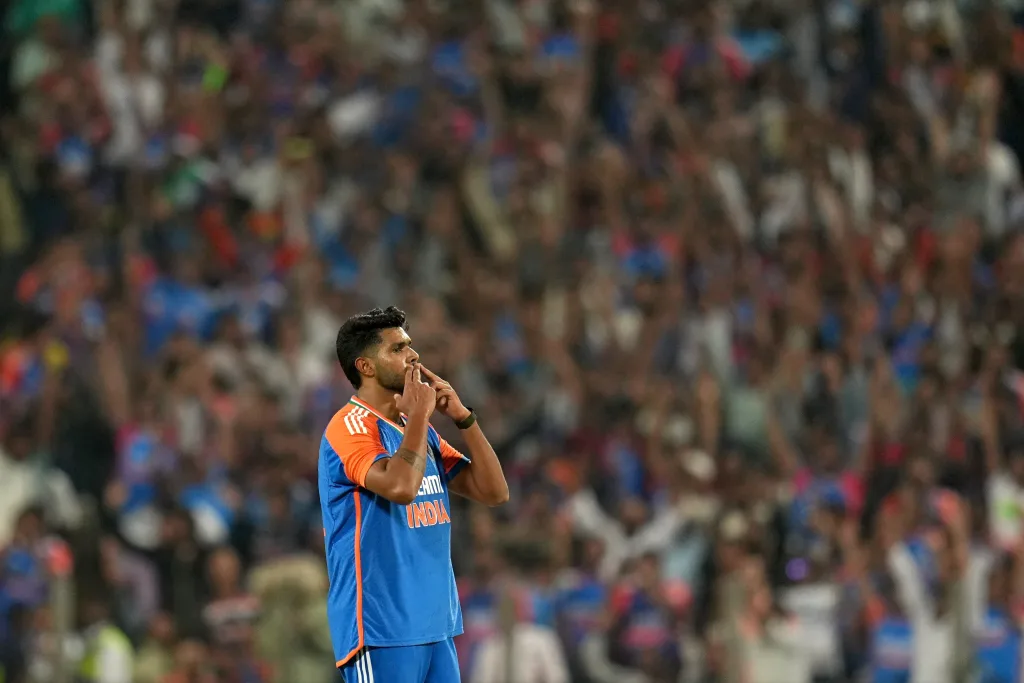
While it’s still early days in his international career, Rana has already shown glimpses of a player who can change matches in short bursts. His rapid rise has seen him leapfrog Siraj and others into India’s Champions Trophy plans, and if he continues on this trajectory, he could well be a key player in India’s quest for silverware.
Read More: ICC Champions Trophy 2025: Full Squads Announced
FAQs
Why was Harshit Rana selected over Mohammed Siraj for the Champions Trophy 2025?
Harshit Rana was picked over Siraj due to his ability to bowl hard lengths, generate extra bounce, and contribute with the bat. The selectors prioritized balance, opting for all-rounders and specific roles in the squad.
How did Harshit Rana perform on his ODI debut against England?
Rana had an eventful debut, conceding 26 runs in an over but bouncing back with two quick wickets, dismissing Ben Duckett and Harry Brook in the same over.
What makes Harshit Rana a valuable asset for India in the Champions Trophy?
His ability to hit the deck hard, bowl sharp bouncers, and contribute with the bat adds depth to India’s squad, especially on Dubai’s pace-friendly surfaces.
What is Harshit Rana’s bowling speed and style?
Rana consistently bowls above 140 kph, using his height to generate steep bounce and trouble batters with both new-ball swing and deceptive slower deliveries.
How has Harshit Rana performed against top international batters?
He has impressed against England, dismissing key players like Jos Buttler, Harry Brook, and Liam Livingstone with his pace and aggressive bowling style.

